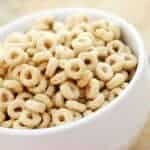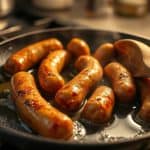Firstly, wood is used to make wooden bowls. A fallen tree and water do not make a good combination after it has stopped growing. If any water is left at the bottom of the vessel, or if the dish itself is submerged in water, wood, which is soft and porous, will absorb it.
When it absorbs water, it swells, sometimes resulting in cracks, twists, or splits. It is particularly harmful to this material when it is wet.
So, if you want to preserve your bowl in the best possible condition, you should only wipe it out with a damp cloth or give it a brief wash in warm, soapy water. Once the dish is rinsed, a soft cloth should be used to dry it. In case you need the best salad bowls, we have recommendation for you.
Mineral oil, olive oil, sunflower oil, or coconut oil should be lightly rubbed inside and out to maintain the integrity of the wood. In the same way, treat wooden salad utensils and individual serving dishes.
The Best Woods for Wooden Bowls
A salad bowl should ideally be made from hardwood. In temperate regions, hardwoods are produced by trees with broad leaves, which bear fruit or a nut. During the fall, they lose their leaves and hibernate through the winter.
In the northern hemisphere, these are deciduous trees, but in the subtropical and tropical regions, they are mostly evergreens.
Hardwoods are generally harder than other wood types, and their cellular structure makes them more appropriate for dishes with high water contents, such as salads.
Cherry – Cherry wood is characterized by its rich, dark heartwood and its light, creamy sapwood, both from the outer region of the tree. Mineral deposits fleck the grain naturally, adding small flecks of black highlights (or lowlights).
Cherry wood is known for its outstanding durability as well as its tendency to improve over time, taking on a lustre of deep, rich tones. Due to its deep tones, it doesn’t need to be dyed or stained, so it is 100% safe to serve food on.
Maple – Another durable and attractive wood that can be used with food. As a result of the pale color of maple, it has a charming, country-style appearance. It becomes a mature, lighter wood with age, which gives it a radiance and glow that distinguishes the top woods.
A gorgeous hardwood with a contrast of light and dark browns that requires no staining, making it a good choice for food. The walnut bowl, on the other hand, has a hint of walnut flavor and fragrance, a bonus if you’re a walnut fan… Black walnut is one of the most durable hardwoods on the market today.
Teak – Dark wavy threads run throughout the grain, creating stunning highlights in its characteristic profile. Teak is a naturally water-resistant hardwood from the tropics, making it a great choice for the kitchen. Nonetheless, teak still needs to be lightly seasoned after use in order to maintain its protective properties.
Its lustrous sheen comes from the lustrous sheen it takes on when polished. Olive wood is strong, heavy, and dense, and features rich, earthy-brown streaks that flow with the light blond tones of sapwood. The wood may also emit a lingering, sweet scent.
The wood of the acacia is highly durable, water resistant, and highly hard. The natural grain shows deep, rich ribbons of gold, amber, and earth tones, making it perfect for use in kitchenware. It also has a deep radiance when polished.
Bamboo is not a tree, but rather a member of the grass family with wood-like characteristics that grows extremely quickly. The material is also easy to sustain, strong and lightweight, as well as anti-microbial.
Plants can be harvested in just four years at a height of 60 – 70′. If you’re worried about the ecological impact of dodgey harvest practices, look for bamboo that has been FSC certified (Forest Stewardship Council) and grown on plantations not used as a food source or habitat for the Giant Panda
Woods to Avoid To Make Wooden Bowls
Kitchenware should not be made of beech because it lacks the durability required. If left untreated, beech will yellow, fade, and eventually turn gray. In these cases, staining or dying may be used to compensate, but it is not guaranteed to be food safe.
While oak examples are beautiful to look at, they are not very durable. It’s easy to chip and split oak, and it tends to shrink as it ages – and a stain is often necessary to bring out its natural beauty. Stains that are not FDA approved may not be food safe and should be avoided.
If you are trying to prevent water damage, you should avoid red oak dishes and other products because their open and porous cell walls allow moisture to pass through (white oak used to be prized for constructing ship hulls because of its water-resistance).
In comparison to other hardwoods, birch is particularly soft and loses volume as it dries, making it a prime candidate for warping and twisting, and as a result, does not make a great bowl material.
One Piece Construction
When making vessels, a single, solid piece of wood turned on a lathe and kiln dried at a low temperature will be the best choice, structurally speaking.
Solid wood turned examples, such as this walnut example, are not cheap. These handcrafted examples are normally priced between $300 and $400. However, they will also be the most expensive as they are labor intensive.
Segmented Construction
Many options exist for beautifully crafted vessels constructed from segmented pieces, glued together in a ring-like fashion or joined vertically in a slat-like fashion. The Totally Bamboo (reviewed below) is at the extreme end of segmented construction.
Each seam and joint increases the likelihood of water seepage. Even if you take great care to clean and season your bowl, water damage can still occur.
Was this helpful?
Hi there! I’m a food enthusiast and journalist, and I have a real passion for food that goes beyond the kitchen. I love my dream job and I’m lucky enough to be able to share my knowledge with readers of several large media outlets. My specialty is writing engaging food-related content, and I take pride in being able to connect with my audience. I’m known for my creativity in the kitchen, and I’m confident that I can be the perfect guide for anyone looking to take their culinary journey to the next level.








